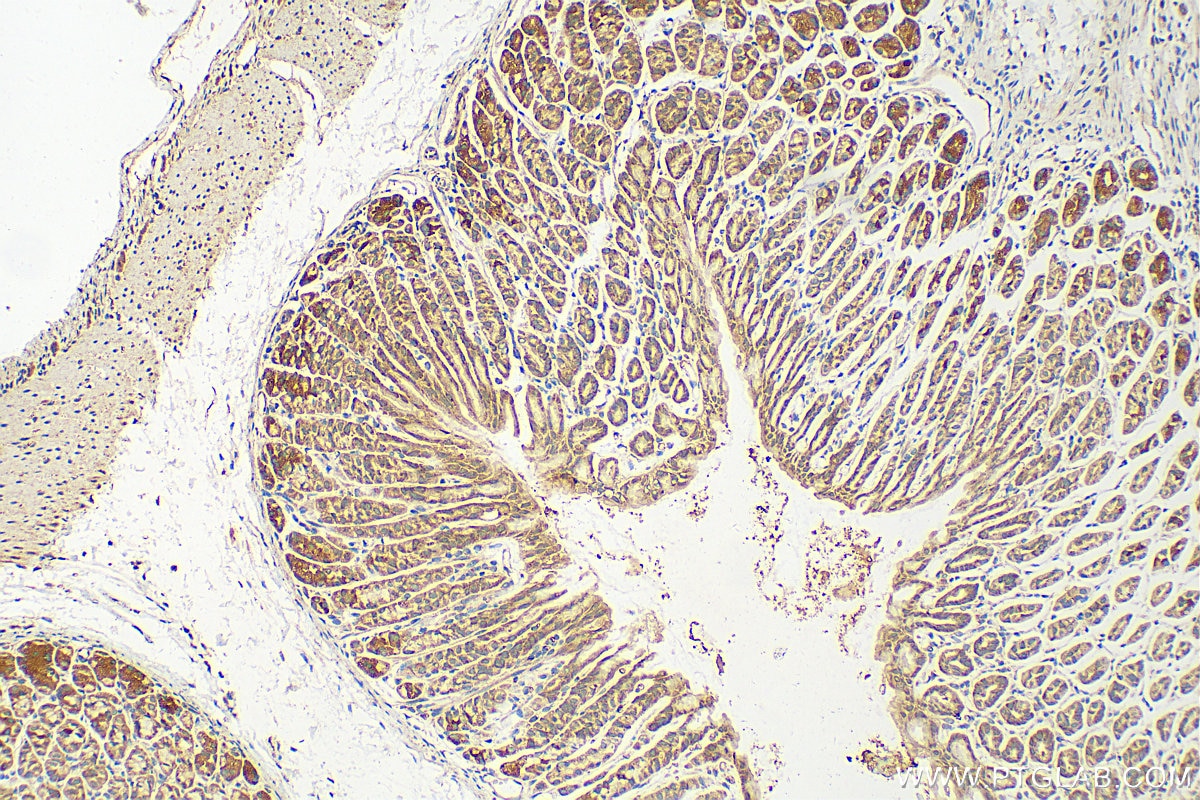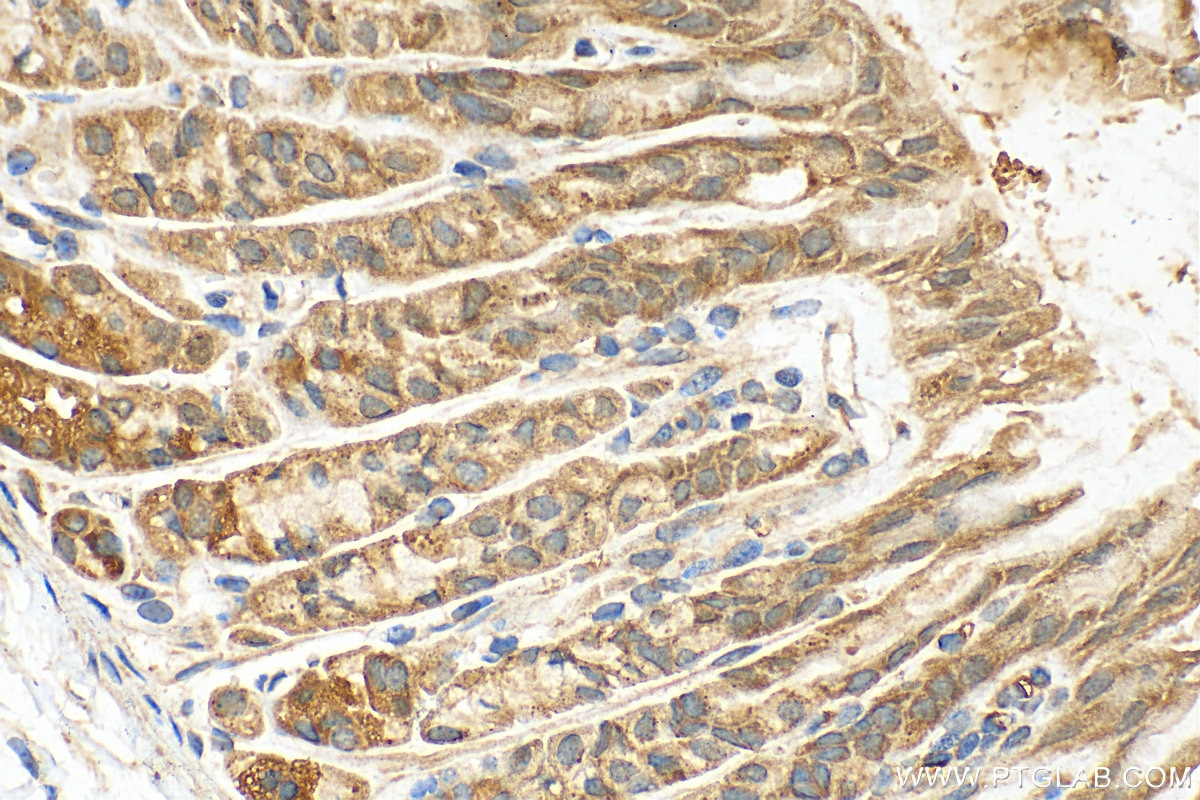AP1S3 Polyclonal antibody
AP1S3 Polyclonal Antibody for IHC, ELISA
Host / Isotype
Rabbit / IgG
Reactivity
human, mouse
Applications
IHC, ELISA
Conjugate
Unconjugated
Cat no : 17365-1-AP
Synonyms
Validation Data Gallery
Tested Applications
| Positive IHC detected in | mouse stomach tissue Note: suggested antigen retrieval with TE buffer pH 9.0; (*) Alternatively, antigen retrieval may be performed with citrate buffer pH 6.0 |
Recommended dilution
| Application | Dilution |
|---|---|
| Immunohistochemistry (IHC) | IHC : 1:50-1:500 |
| It is recommended that this reagent should be titrated in each testing system to obtain optimal results. | |
| Sample-dependent, Check data in validation data gallery. | |
Product Information
17365-1-AP targets AP1S3 in IHC, ELISA applications and shows reactivity with human, mouse samples.
| Tested Reactivity | human, mouse |
| Host / Isotype | Rabbit / IgG |
| Class | Polyclonal |
| Type | Antibody |
| Immunogen | AP1S3 fusion protein Ag10751 |
| Full Name | adaptor-related protein complex 1, sigma 3 subunit |
| Calculated Molecular Weight | 104aa,11 kDa; 154aa,18 kDa |
| GenBank Accession Number | BC021898 |
| Gene Symbol | AP1S3 |
| Gene ID (NCBI) | 130340 |
| Conjugate | Unconjugated |
| Form | Liquid |
| Purification Method | Antigen affinity purification |
| Storage Buffer | PBS with 0.02% sodium azide and 50% glycerol pH 7.3. |
| Storage Conditions | Store at -20°C. Stable for one year after shipment. Aliquoting is unnecessary for -20oC storage. 20ul sizes contain 0.1% BSA. |
Background Information
AP1S3 is a subunit of the adaptor complex AP-1. It belongs to the adaptor complexes small subunit family. Adaptor protein (AP) complexes are cytosolic heterotetramers that mediate the sorting of membrane proteins in the secretory and endocytic pathways. AP-1 is found at the cytoplasmic face of coated vesicles located at the Golgi complex, where it mediates both the recruitment of clathrin to the membrane and the recognition of sorting signals within the cytosolic tails of transmembrane receptors.
Protocols
| Product Specific Protocols | |
|---|---|
| IHC protocol for AP1S3 antibody 17365-1-AP | Download protocol |
| Standard Protocols | |
|---|---|
| Click here to view our Standard Protocols |



